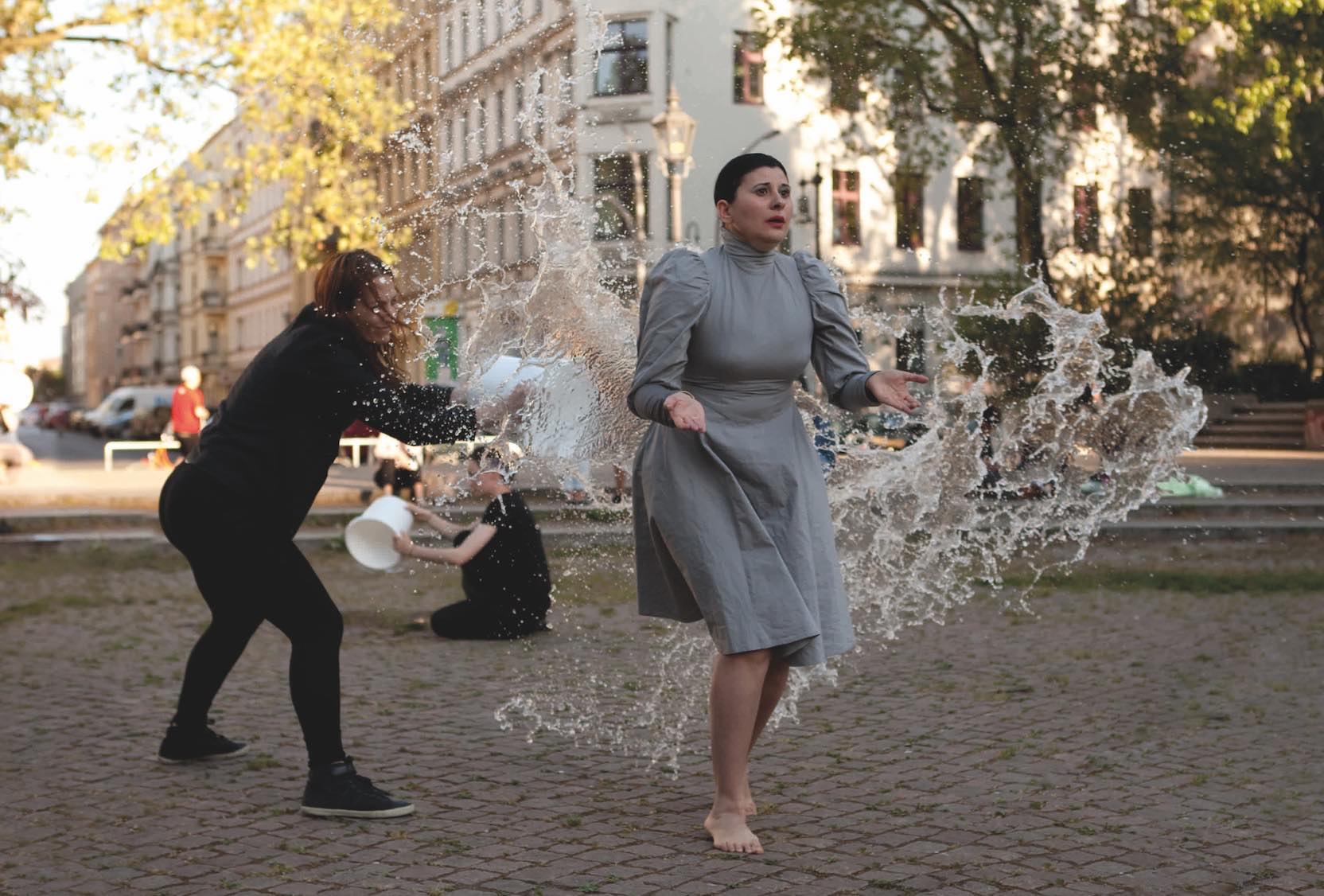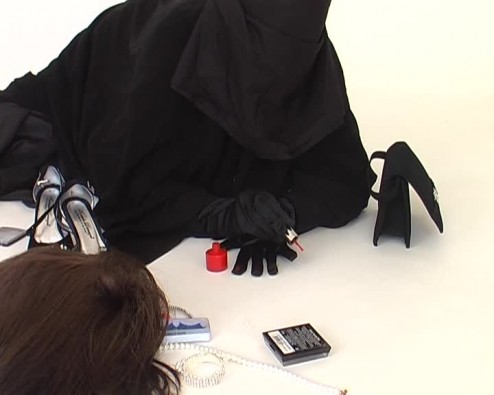 |
 |
NEZAKET EKICI
Nezaket Ekici (born in Kırşehir, Turkey in 1970) studied art pedagogics, sculpture and performance in Munich and Braunschweig, Germany. She then began working with performance and completed a master’s degree in Performance Art with Marina Abramovic. She has exhibited internationally, with a total of more than 120 different performances on 4 continents in more than 100 cities and 30 countries. She currently lives and works in Berlin and Stuttgart.
Nezaket Ekici’s videos, installations and performances are often process-based, asking viewers to derive their own emotional and intellectual interpretations. In her work, complex, often controversial topics are suspensefully countered by their aestheticizing presentation. Ekici frequently uses her own Turkish origins and education as a subject of tension, pitting her background against her living environment in present-day Germany. Cultural, geographic and individual boundaries, transgressions, gender, cross-border connections and authorial bodies are central to Ekici’s works. By highlighting these themes in everyday life and placing them in a new context, she aims to interconnect every element to form a total work of art — a Gesamtkunstwerk.
Major exhibitions include; Forum Migration, Tiroler Landesmuseen Ferdinandeum, Innsbruck, Austria (2018); Mother Tongue, Oslo Museum, IKM, Oslo, Norway (2017); Under Surveillance & Zeitgeist (solo), Goethe-Institut, Dublin, Ireland (2017); Einwand (solo), KAS Foundation, Berlin, Germany (2017); Nezaket Ekici (solo), Villa Massimo, Rome, Italy (2017); Alles was man besitzt, besitzt auch uns (solo), Haus am Waldsee, Berlin, Germany (2015); Einzelausstellung: Zwei Welten, Kunstverein Augsburg, Germany (2014); Neighbours – Contemporary Narratives from Turkey and Beyond, Istanbul Modern, Turkey (2014); Personal Map, to be continued… (solo), in cooperation with Marta Herford, De Bond, Cultuurcentrum Brugge, Belgium (2013). Ekici has received 15 separate project grants from the Goethe Institute for projects around the world. Major collections include; Samdani Art Foundation, Bangladesh ; MOMENTUM Collection Bangladesh; Montreal Museum of Fine Arts, Canada; GASAG Aktiengesellschaft Berlin, Germany; Kunstmuseum Heidenheimm Germany; The Foundation Frances, France; Culturale Pamplona, Spain; Elgiz Museum of Contemporary Art, Turkey and Koc Foundation Contemporary Art Collection, Turkey.
ON THE WAY SAFETY AND LUCK (2016)
HD Video, 34 min 19 sec
MOMENTUM Performance Archive.

In the performance On the Way, Safety and Luck, Ekici, a constant traveler, evokes her childhood memories concerning a farewell ritual she witnessed during her early childhood in Turkey and later also in Germany. Each time a Turkish family had to travel and leave home, either to go back to their old home in Turkey or to the new home in Germany, the members of the family or neighbors who are left behind used to come out in the street with buckets of water, throwing water behind the cars of those who are departing. This custom is also known in many other Balkan cultures. It used to be (and sometimes still is) observed in Bulgaria and Serbia. The use of water in this leave-taking ritual has the meaning of good luck and safe journey, which should come to pass as easily and smoothly as ‘running water’. The meaning of water here is also as a means of spiritual purification and change.
In re-enacting this custom in a rather radical manner, Ekici may imply that travel and leaving home nowadays is not always motivated by personal decisions but by other forces such as poverty and war. Seen, furthermore, through the lens of Corona-times, it implies a purification more physical than spiritual, as people around the globe are instructed to soak and scrub to disinfect themselves after every journey outdoors.
The iteration of Ekici’s performance shown here, from the MOMENTUM Performance Archive, was filmed in the context of MOMENTUM’s exhibition HERO MOTHER (2016), performed at the opening of the exhibition. Previously, On the Way, Safety and Luck has been presented at: the Thessaloniki Performance Festival, Parallel Programme of the 3rd Thessaloniki Biennale of Contemporary Art (2011); and the Festival Künstlerinnenverband Bremen, 7. Bremer Kunstfrühling, Güterhalle (2011).
VEILING AND REVEILING (2010)
Video, 24 min 17 sec

Whether in Germany or in the artist’s native Turkey, the question of the Tschador’s meaning and effects remains controversial. How do streamlined notions of feminine beauty intersect with a headscarf’s political and religious references? For Ekici, stories of Turkish students donning wigs to conceal their forbidden headscarves at university, or methods of transporting beauty products beneath the veil, have led her to question if women can ever truly wear head coverings out of free will. In the video performance Veiling and Reveiling, Ekici wears a Tschador in which various items are concealed: a wig, make-up, purse, bra, dress, tights, jewelry, shoes, artificial eyelashes. The video begins when the individual pieces are produced from the pockets of the Tschador and concludes when the veil has been fully redecorated, a wilful inversion of public and private space.
Veiling and Reveiling acquired a further signification in the time of Corona. Does a burka become the ultimate form of safety gear? As Ekici meticulously dresses herself in lingerie and make-up, donned on top of the burka she is wearing, she subverts the normative function of the burka, to comic effect. But, if viral ticking time bombs are indeed walking our streets, this practice may start to look like a good idea for everyone.
Following an exhibition of another of Ekici’s works, Atropos, at MOMENTUM Sydney in 2010, the artist donated Veiling and Reveiling to the MOMENTUM Collection.
VEILING AND REVEILING Exhibition History
2009
– Marta Herford Museum, Germany (the first edition of Veiling and Reveiling is in the Marta Herford Museum collection)


 Back to Index
Back to Index